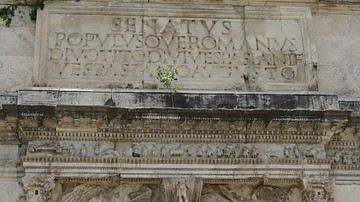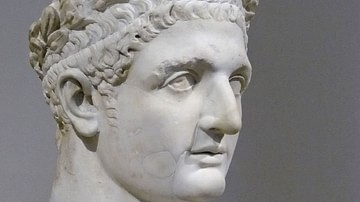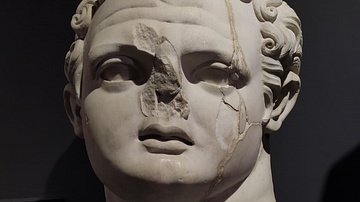Illustration
A map illustrating the territorial extent and political boundaries of the Roman Empire during the Flavian Dynasty, around 96 CE. Although a short-lived sequence of reigns from Vespasian (69 - 79 CE) through Titus (79 – 81 CE), until Domitian (81 - 96 CE), the Flavians (an Italian gentry, and not traditional Roman aristocracy) are remembered for restoring stability to Rome after the turbulent reign of the last Julio-Claudian – Nero, and the civil wars that had wreaked havoc on the Empire and Italy in particular. Theirs was a rule noteworthy for increased recruitment of equites (upper-class plebeians) to the imperial administration and civil service, the destruction of Jerusalem and the Temple, the eruption of Mount Vesuvius, the completion of Amphitheatrum Flavium (better known as the Colosseum for being in the vicinity of a giant 30 meters (98 feet) bronze statue called the Colossus of Nero) and signing an uneasy peace treaty with the Dacians before the conflict flared up again under the reign of emperor Trajan.
About the Author
Cite This Work
APA Style
Netchev, S. (2023, July 07). The Roman Empire during the Flavian Dynasty, 69 - 96 CE. World History Encyclopedia. Retrieved from https://www.worldhistory.org/image/17609/the-roman-empire-during-the-flavian-dynasty-69---9/
Chicago Style
Netchev, Simeon. "The Roman Empire during the Flavian Dynasty, 69 - 96 CE." World History Encyclopedia. Last modified July 07, 2023. https://www.worldhistory.org/image/17609/the-roman-empire-during-the-flavian-dynasty-69---9/.
MLA Style
Netchev, Simeon. "The Roman Empire during the Flavian Dynasty, 69 - 96 CE." World History Encyclopedia. World History Encyclopedia, 07 Jul 2023, https://www.worldhistory.org/image/17609/the-roman-empire-during-the-flavian-dynasty-69---9/. Web. 25 Apr 2025.








